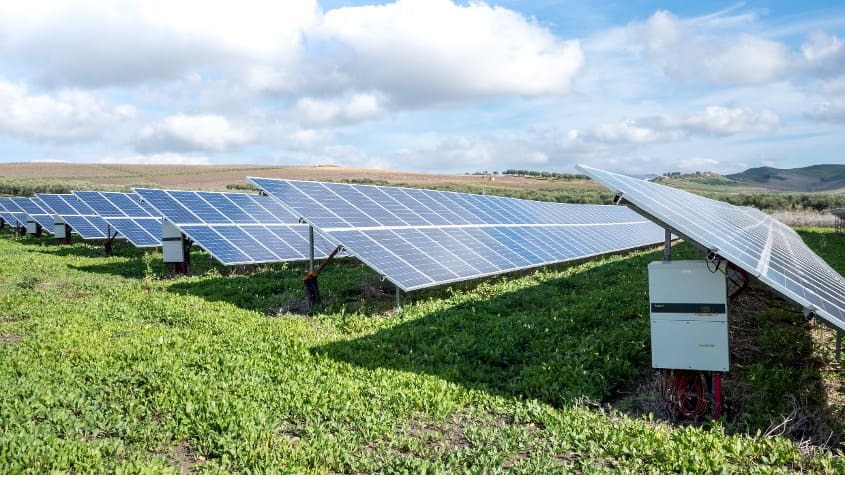Although the COVID-19 pandemic has led to an economic slowdown on a global scale, the renewable energy sector has seen record increases in both the amount of energy actually produced and in revenues throughout the 2020s.
Experts confirm that the trend is set to continue in 2021, with China’s increased commitment to reducing pollutant production and the election of Mr Biden as US president promising to give new impetus to the conversion of the US to clean energy sources.
But more energy produced from renewable sources means there is a greater need for monitoring.
FUNCTIONS AND BENEFITS OF MONITORING SOFTWARE
The concept of “monitoring” applied to renewable energies has several implications related to as many important functions which are:
- Eliminating energy waste;
- Improving operational and production procedures;
- Estimating energy consumption trends in order to ensure energy flows are adequate to meet requirements while avoiding energy surpluses;
- Detect system failures in good time.
In order for these benefits to be enjoyed by renewable energy producers, an adequate monitoring system must be put in place. These mechanisms, increasingly technologically advanced and less and less dependent on complex and expensive hardware, rely on digital solutions and software that are potentially within everyone’s reach.
HOW MONITORING SOFTWARE WORKS?
I vari sistemi di monitoraggio variano a seconda della tipologia di energia rinnovabile da monitorare (eolico, fotovoltaico, ecc.). In particolare, per quanto riguarda le variabili da valutare e la sensoristica da utilizzare per la rivelazione dei dati rilevanti, questi sistemi hanno spesso in comune un’architettura Programmable Logic Controller o Supervisory Control And Data Acquisition, soprattutto in ambito industriale.
The various monitoring systems vary according to the type of renewable energy to be monitored (wind, photovoltaic, etc.). In particular, with regard to the variables to be evaluated and the sensors to be used for the detection of relevant data, these systems often have in common a Programmable Logic Controller or Supervisory Control And Data Acquisition architecture, especially in the industrial field.
PHOTOVOLTAIC SECTOR
In the photovoltaic sector, for example, it is essential to monitor the Performance Ratio between the energy that can potentially be produced by the plant and the energy that is actually produced in a given period of time, in order to have a clear picture of the system losses that occur during the energy transformation process. Other relevant data in this area is the “technical availability”, which measures the actual operating time of the plant. Through the use of special sensors, such as irradiation sensors or pyranometers, this information is collected and, once the data has been processed remotely (cloud computing is increasingly being used for this purpose), it can be consulted via a software interface directly by the user, either from a PC or a mobile device. In almost all cases, this data consultation takes place in real time.

WIND SECTOR
In the case of wind energy, however, in addition to information on actual energy production, a number of variables of a mechanical nature and the structural integrity of the wind turbine blade come into play. It is also necessary to use meteorological data in order to evaluate the possible gap between the energy that can be potentially produced in a given period and the energy that is actually produced.
The interaction between these different types of data and the possibility of a convenient use of information in a single “monitoring centre”, which can also be simply the user’s smartphone, is facilitated by the increasingly frequent use of the Internet of Things, which creates a real network of interconnected detection devices that communicate with each other.

THE CENTRALITY OF THE USER EXPERIENCE FOR RENEWABLE ENERGY MONITORING SOFTWARE
Regardless of whether this is done in an ad hoc monitoring room or on the users’ personal devices, the most interesting element of these systems is the synthesis of information from multiple sources that is provided to the user, whether he or she is producing energy from renewable sources or is the final consumer of this type of energy.
BENEFITS FOR USERS AND THE ENVIRONMENT
The increasingly widespread use of these tools will lead not only to significant economic savings for all those involved, thanks to the optimisation that monitoring makes possible, but also to the growing reliability of clean energy sources with consequent benefits for the environment and the entire ecosystem. Looking for a partner for a sustainability project? Get in touch with IPPO-Engineering! Our team get back to you in a short time.
